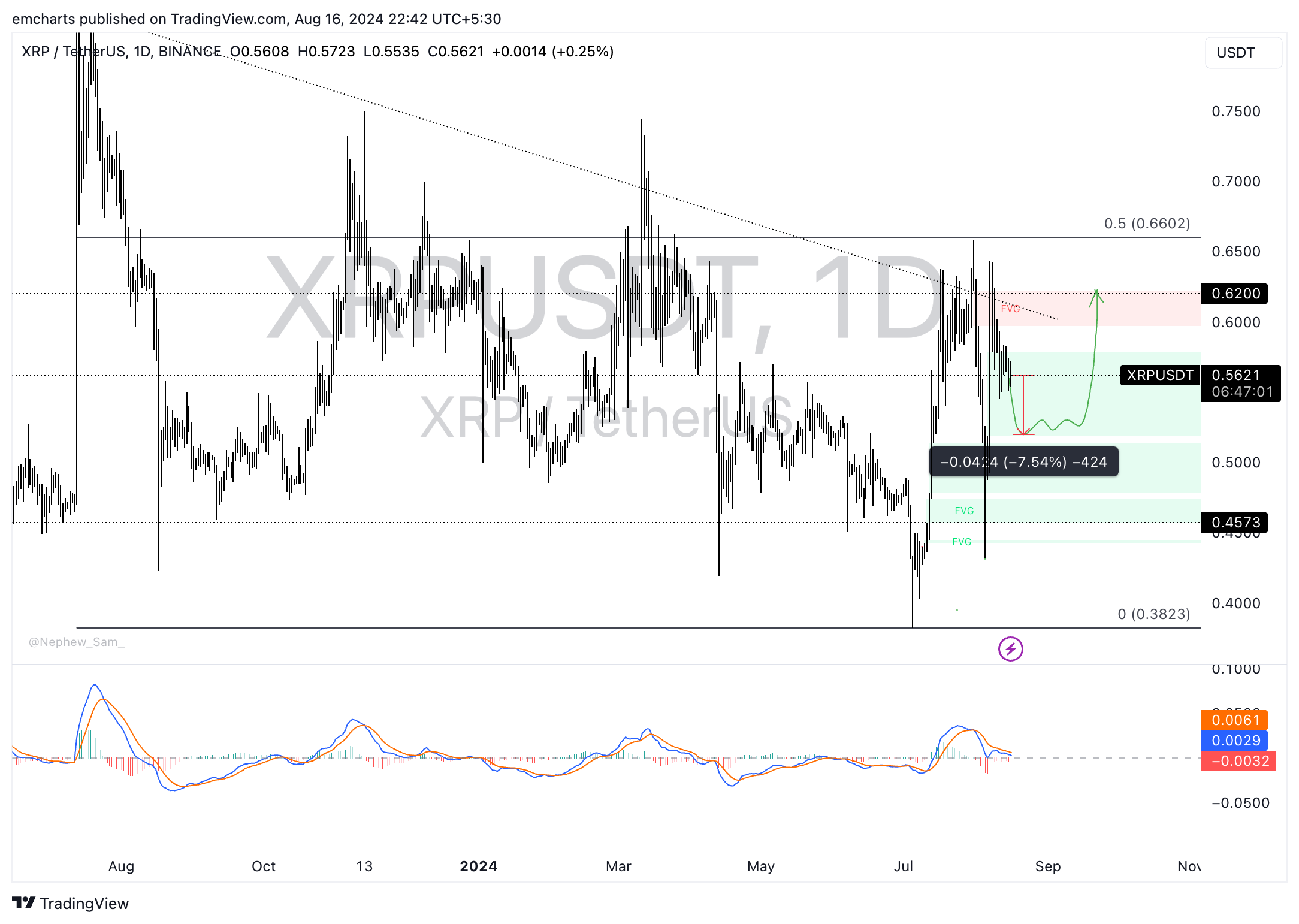Ripple CLO indicates SEC is less likely to win an appeal, XRP slips to $0.55
- Ripple CLO Stuart Alderoty told CryptoLaw in an interview that less than 10% of appeals result in ruling reversals.
- SEC is less likely to win appeal against Ripple, argues Alderoty.
- XRP drops to $0.55 on Friday, loses key support at $0.57.
Ripple (XRP) traders are still digesting the outcome of the Securities & Exchange Commission (SEC) lawsuit against Ripple. Chief Legal Officer Stuart Alderoty spoke to the team at CryptoLaw in a recent interview, which was published on X.
XRP lost key support at $0.57 and trades at $0.55 at the time of writing.
Daily digest market movers: Ripple CLO expresses confidence in XRP ruling
- Ripple Chief Legal Officer Stuart Alderoty commented on the likelihood of the US financial regulator appealing the ruling in the SEC vs. Ripple lawsuit during his interview with CryptoLaw.
- Alderoty presented listeners with an interesting statistic: less than 10% of the appeals result in reversals. Alderoty is confident that the SEC is less likely to appeal the ruling in the Ripple lawsuit.
- Of two rulings in the lawsuit, the SEC is more likely to appeal Judge Analisa Torres’ July ruling that offered legal clarity on XRP. The July 2023 ruling says XRP is not a security in secondary market transactions.
Ripple Final Judgment https://t.co/6UX9tF3YXS
— CryptoLaw (@CryptoLawUS) August 15, 2024
- XRP traders are digesting the news of the lawsuit ruling and CLO Alderoty’s comments on the outcome and a likely appeal.
Technical analysis: XRP could suffer nearly 8% decline
Ripple is in a multi-month downward trend. XRP is likely to slip lower and erase nearly 8% of its value to sweep liquidity at $0.5195, as seen in the chart below. XRP could begin its recovery once the inefficiency is filled. The target is $0.62, a key resistance level for the altcoin.
The Moving Average Convergence Divergence (MACD) shows underlying negative momentum in XRP price trend.

XRP/USDT daily chart
XRP could rally to $0.60, a psychologically important level for Ripple, if there is a daily candlestick close above $0.5792.
Bitcoin, altcoins, stablecoins FAQs
Bitcoin is the largest cryptocurrency by market capitalization, a virtual currency designed to serve as money. This form of payment cannot be controlled by any one person, group, or entity, which eliminates the need for third-party participation during financial transactions.
Altcoins are any cryptocurrency apart from Bitcoin, but some also regard Ethereum as a non-altcoin because it is from these two cryptocurrencies that forking happens. If this is true, then Litecoin is the first altcoin, forked from the Bitcoin protocol and, therefore, an “improved” version of it.
Stablecoins are cryptocurrencies designed to have a stable price, with their value backed by a reserve of the asset it represents. To achieve this, the value of any one stablecoin is pegged to a commodity or financial instrument, such as the US Dollar (USD), with its supply regulated by an algorithm or demand. The main goal of stablecoins is to provide an on/off-ramp for investors willing to trade and invest in cryptocurrencies. Stablecoins also allow investors to store value since cryptocurrencies, in general, are subject to volatility.
Bitcoin dominance is the ratio of Bitcoin's market capitalization to the total market capitalization of all cryptocurrencies combined. It provides a clear picture of Bitcoin’s interest among investors. A high BTC dominance typically happens before and during a bull run, in which investors resort to investing in relatively stable and high market capitalization cryptocurrency like Bitcoin. A drop in BTC dominance usually means that investors are moving their capital and/or profits to altcoins in a quest for higher returns, which usually triggers an explosion of altcoin rallies.

